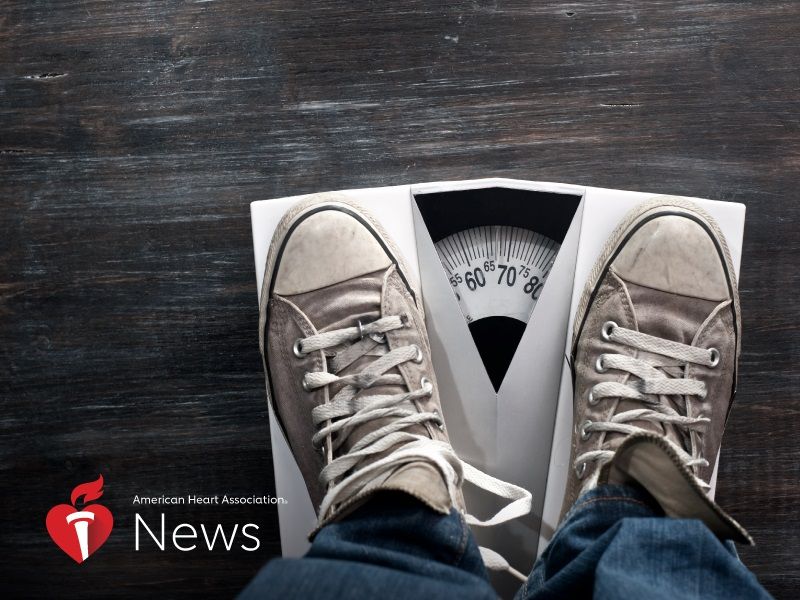FRIDAY, March 15, 2019 (American Heart Association News) — Overweight children may be more likely than normal-weight children to develop life-threatening blood clots as adults, a new Danish study suggests. The good news is, getting to a healthy weight by age 13 eliminated the extra risk.
For the study, published Friday in the Journal of the American Heart Association, the research team used medical exam records to calculate the annual body mass index of more than 300,000 Danish children ages 7 to 13 born between 1930 and 1989. They then used Denmark’s Civil Registration System to study the same children’s health records as adults.
Researchers focused specifically on adult risk for venous thromboembolism, a condition in which a blood clot forms in a deep vein, usually in the leg. If one of these clots travels through the body into the lungs, it can block blood flow and cause a pulmonary embolism, a life-threatening condition.
The study is the first to investigate what role childhood obesity might play in the risk for venous thromboembolism as an adult, said the study’s lead author Dr. Jens Sundboll, an epidemiologist at Aarhus University Hospital in Denmark.
“Because more children are becoming heavier at progressively younger ages,” he said, “our results merit focus on helping children to attain and maintain appropriate weight to prevent cardiovascular disease in adulthood.”
The study showed that children with the highest BMI had a 30 to 50 percent increased risk of developing a blood clot as an adult.
Yet, Sundboll cautioned, the findings don’t necessarily mean childhood obesity was directly responsible for the blood clots. Rather, he said, “being overweight in childhood may correlate with overweight in adulthood, reflecting a lifelong sedentary lifestyle” that influences risk. It’s a connection the researchers couldn’t explore because they didn’t have access to the children’s weight as adults.
There also are genetic factors that could play a role in increasing the risk for blood clots, Sundboll added.
The study also found that overweight children who got to a healthy weight by age 13 had the same risk for VTE as children who had never been overweight. This suggests helping overweight kids lose weight could be beneficial to them as adults.
Dr. Mary Cushman, a hematologist at the University of Vermont Medical Center in Burlington who was not involved with the study, said the findings underscore the need to teach parents and children about the importance of a healthy diet, physical activity and the long-term effects of childhood obesity.
“The behavioral factors that explain excessive weight and weight gain in children are carried forward as adult behaviors,” she said.
Obesity in adults and children is an international problem.
Studies show about 38 percent of the global adult population is obese. In high-income countries, 20 percent of children ages 5 to 19 are overweight. In the U.S., an estimated 13.7 million children and adolescents are obese.
VTE is the third most common vascular diagnosis after heart attack and stroke. According to the latest statistics from the American Heart Association, about 676,000 people were treated for a deep vein blood clot and about 340,000 were treated for a pulmonary embolism in 2014.
In general, the risk for VTE is higher in adults who are older, overweight or obese. About half of episodes occur in relation to surgery, hospital stays, cancer, immobilization or pregnancy. Treatment typically includes use of a blood-thinning medication to reduce the risk of more clots.
Copyright © 2025 HealthDay. All rights reserved.

